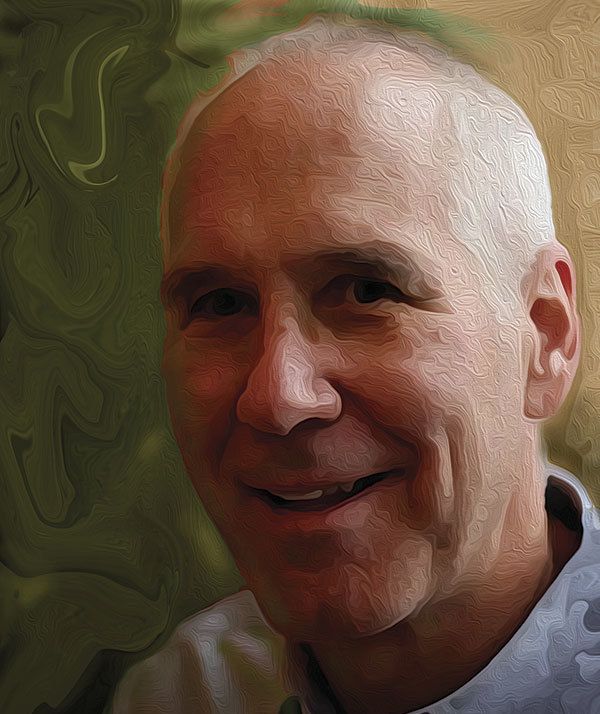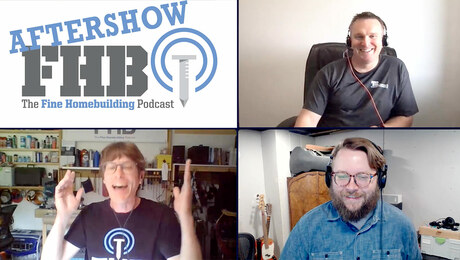Tailgate: Tedd Benson, Builder
The celebrated homebuilder describes his journey from timber-frame disciple to successful businessman

How did you discover timber-framing?
Early in my career, I became enthralled with large timbers, nail-free joinery, and the idea of framing with the tolerances of fine furniture. I decided that this craft never should have died, so in 1974, I devoted myself to it. Five years later, I wrote a book about it (Building the Timber Frame House: The Revival of a Forgotten Art; Scribner, 1981). The purpose of the book was to get the word out. For timber-framing to become a viable and living art, we needed to have an industry, not a few scattered zealots.
How did you develop such a high-profile brand and a solid business?

Some of the most important things we do in life, we do with no education. This is what happened to me in business. I had no background, and I even denied being in business. I would come into the office to answer the phone with my carpenter’s belt on. I surrounded myself with really good people, though, who filled in my gaps and helped me to overcome my deficits.
Then a big thing happened in the late 1980s: I found myself stuck in a rut. I had lost my inspiration. Two guys that I had worked with for many years, really my best employees, came in late, and I was about to go into a rant and chew them out. But then I stopped myself and realized that the problem was me. We had built great homes, but not a good business.
How did you deal with your crisis?
I called my employees together and confessed my concerns about our business and my role. I announced that I would take a sabbatical to figure it out. We had to create a good business as well as do great craft. I thought the sabbatical would take me about 10 days, but it was four months.
This was 1989. There was a lot of good literature about business then. It was the heyday of professional business management, and through reading and reading, I got as excited about the craft of business as I had become about timber-framing. I realized I was a good craftsman at heart, and this was another craft that I also could master. I did my own self-taught MBA.
When I came back to work, I pleaded guilty to my employees: “All these years, you have been doing things my way. I have been a bad leader. You have followed me, and I taught you the craft, but I also became a dictator.” I said, “I don’t want to do this my way anymore. I want to find our way.” The transition was not easy, but now we have a wonderful business, not just a successful one. It has become an expression of our values, not just my values.
How about the recession?
This recession tested us. It’s easy to remain a magnanimous business in the good times, tougher in the tough times. During these lean years, it’s not been about profit-sharing; it’s been about splitting a proverbial six-pack among 75 employees. We’ve put a lot of effort into investing in ourselves and into looking at the future, which would not have been possible without the “we’re all in this together” culture we developed. An organization is an organic thing. Bensonwood Homes has developed the lasting strength of a tight-knit community.
What’s next?
When we decided to become a “real” business, we also decided to raise the craft to the level we wanted. We had to work on high-end homes, the best homes built in America.
Bensonwood moved into the high-end market and has been building high-quality custom homes all over the United States. We developed all of the requisite skills, and now we even make drop-dead beautiful furniture for our homebuyers.
We had always wanted to build affordable homes, too, the kind that we had started with in our early days. The past six years have given us the opportunity to explore this market segment again with and without timber-framing. We now build turnkey homes for $200,000 to $400,000.
How does this square with Bensonwood’s reputation as a millionaire’s builder?
It’s a contrast, so we split the company in October of last year, separating Bensonwood Homes from our new company, Unity Homes. We have a new image and marketing program, and a different team structure to bring our affordable objectives into clear focus. Our concept is to raise the bar for what mainstream homes can and should be, and then continue to work hard to bring down the cost even further.
Read more from the interview with Tedd Benson in our Building Business blog
























